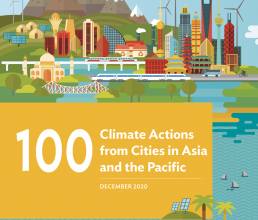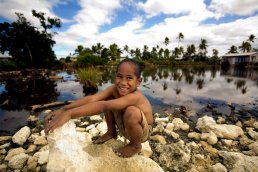First appeared in

Asian Development Bank
100 Climate Actions from Cities in Asia and the Pacific
The ongoing urban resilience project aims to supply flood management, water and sanitation infrastructure, and a future resilience and climate strategy to the city’s most vulnerable households.
The ongoing urban resilience project aims to supply flood management, water and sanitation infrastructure, and a future resilience and climate strategy to the city’s most vulnerable households.
Tonga’s capital on the southern island of Tongatapu hopes to raise the standard of living for its 23,000 residents while also enhancing the ability of the island to cope with natural disasters and effects of climate change, particularly flooding and sea level rise.
99.9%
OF POPULATION WITH SECURE WATER SUPPLY
80% of Tonga’s population and critical infrastructure are located in flat, low-lying coastal areas that are exposed to rising sea levels, with the frequency of flooding and prevalence of storm surges only expected to increase in the coming years. Some climate models suggest that without strong and fast climate action, most of current-day Nuku’alofa could be underwater by 2100.
Drainage systems will help improve the resilience of 40 hectares of land in seven flood-prone locations, while also contributing to public health efforts by reducing exposure to waterborne diseases. A reliable water supply will be secured for 99.9% of the population through upgrades to piped distribution networks, and the introduction of a long-term climate and disaster resilient urban development strategy and investment plan will increase the future resilience of the urban area.
The project is supported by an $18 million ADB grant.

The vulnerability of citizens will be reduced through the preparation of a new climate and disaster resilient urban development strategy and investment plan for Nuku’alofa (photo by ADB).
The Challenge
Nuku’alofa’s urban growth has not been matched by a similar increase in adequate public services, and the city faces dire climate change predictions.
Co-Benefits
Economic The flood management aspects of the project will reduce flooding incidence and related repair costs for both households and businesses.
Health Improved sanitation and hygiene will reduce exposure to waterborne diseases and improve water safety for residents.
Social By implementing a disaster risk management program at the community level, organizers can target those most vulnerable to climate change impacts.

